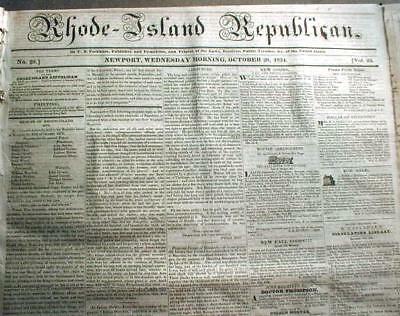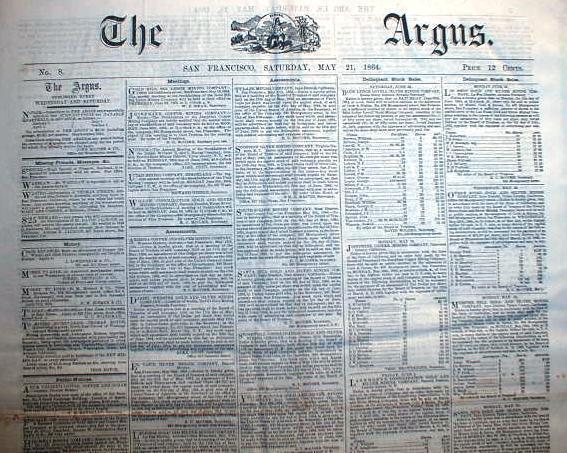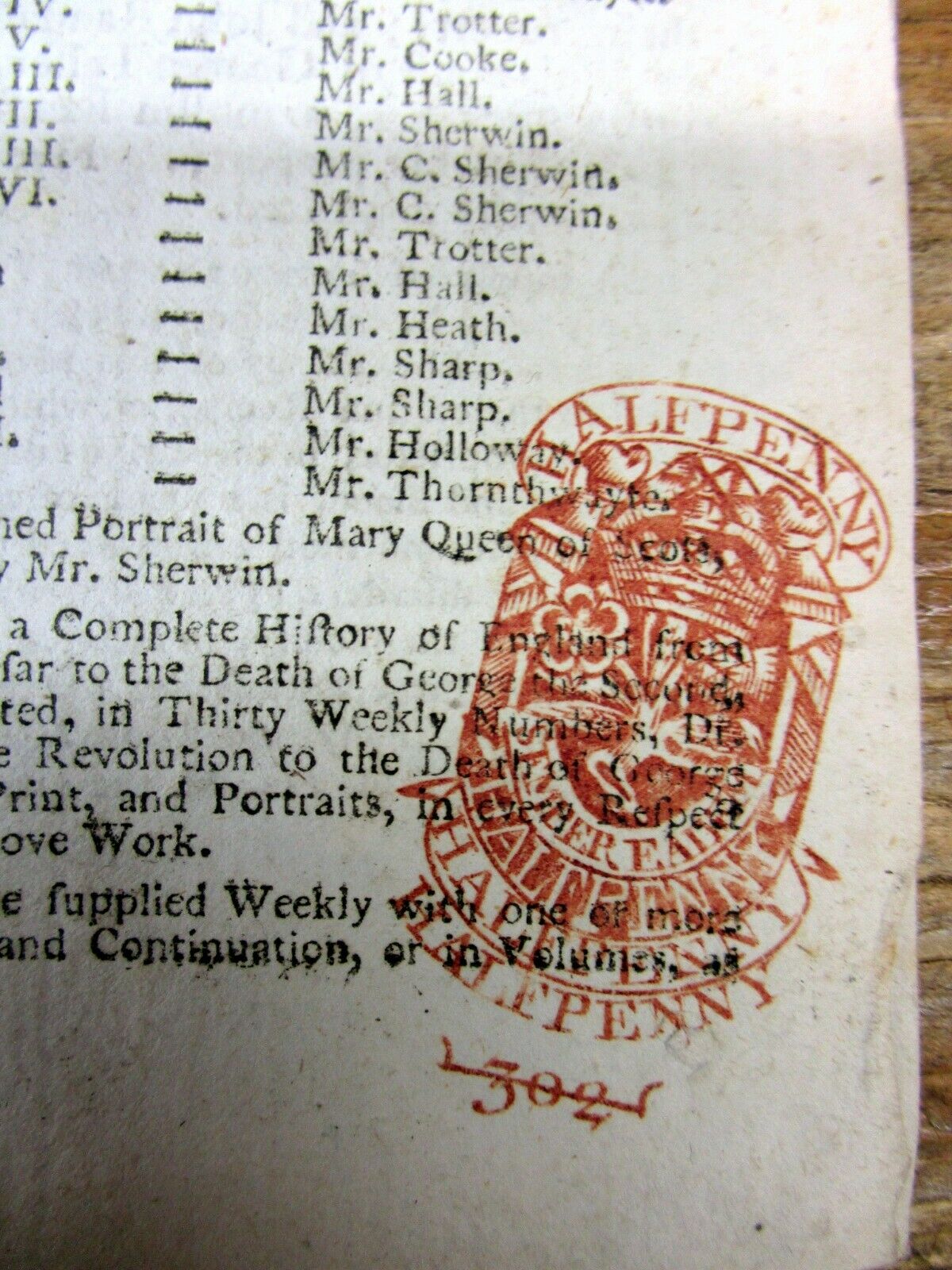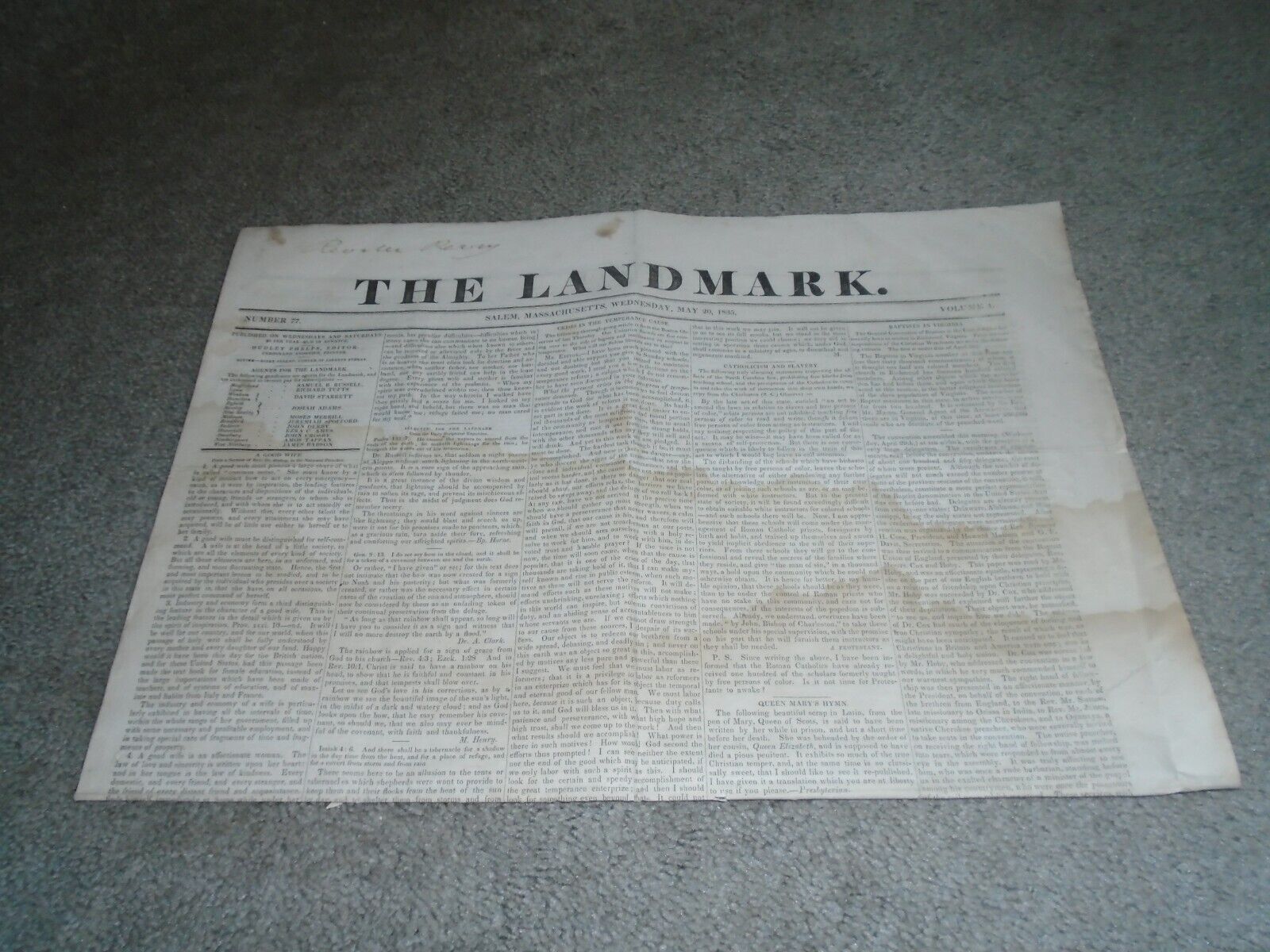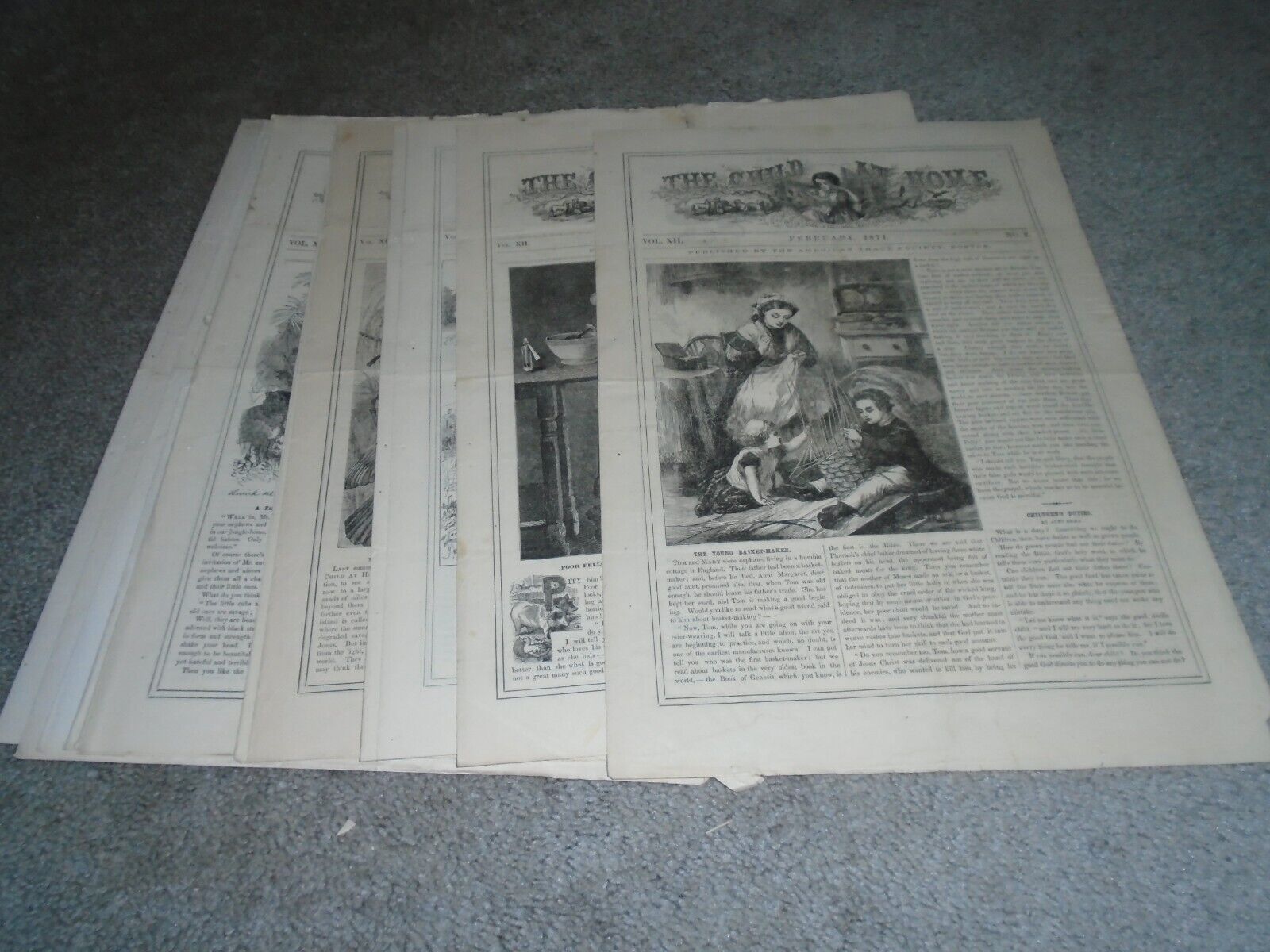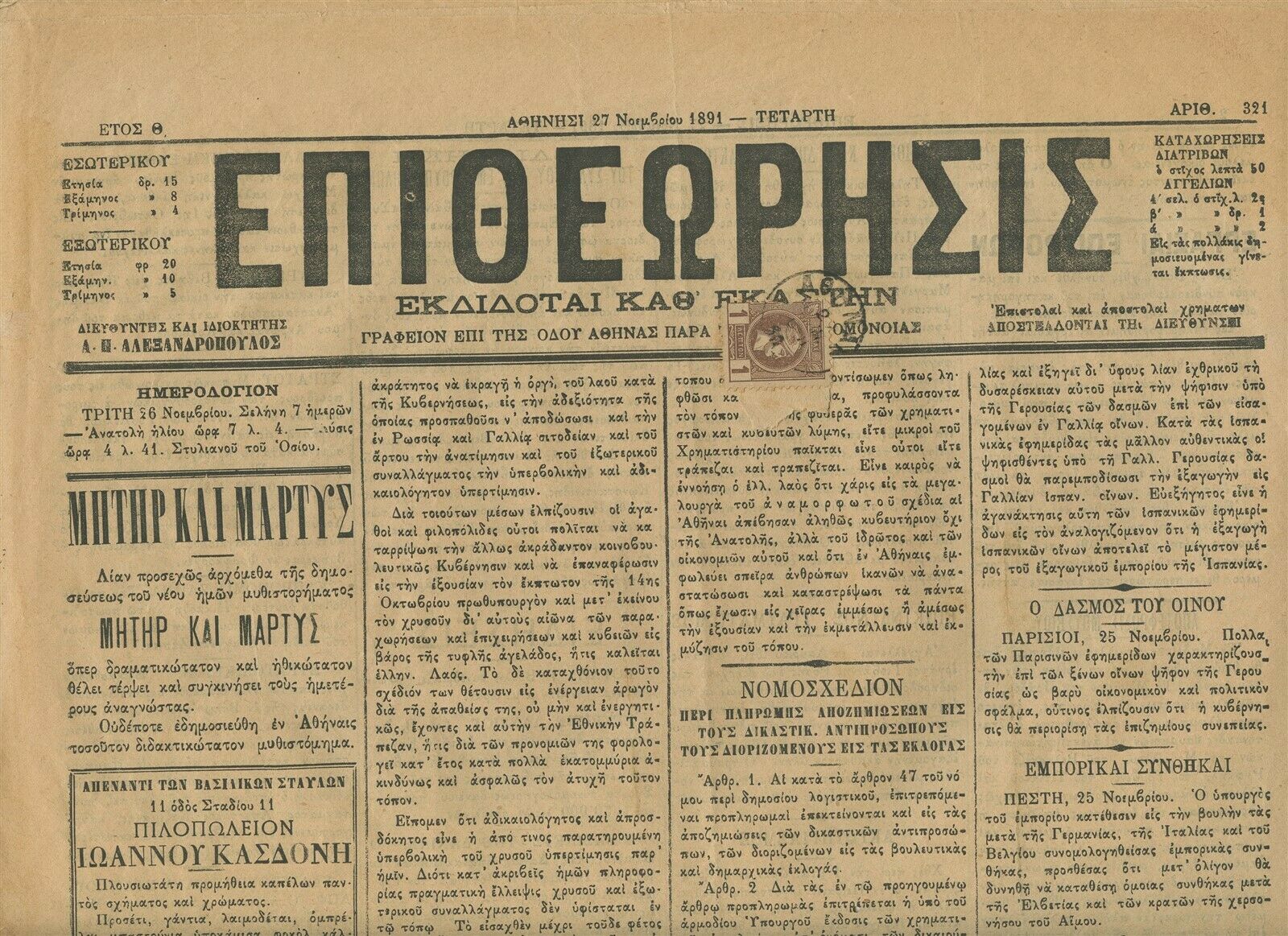-40%
1863 CIVIL WAR newspaper FREED NEGR0ES to Union after EMANCIPATION PROCLAMATION
$ 21.12
- Description
- Size Guide
Description
1863 CIVIL WAR newspaper FREED NEGR0ES to Union after EMANCIPATION PROCLAMATION1863 CIVIL WAR newspaper with an inside-page full-page poster engraving depicting FREED NEGR0ES on their way to the Union Army after the EMANCIPATION PROCLAMATION takes effect. Also inside is a report on the affects of the Emancipation just weeks after it became law
- inv # 2W-228
Please visit our
EBAY STORE
for THOUSANDS MORE HISTORICAL NEWSPAPERS for SALE or at auction
SEE PHOTO(s) - COMPLETE ORIGINAL NEWSPAPER, the
Harper's Weekly Illustrated newspaper
dated This original newspaper contains
The Emancipation Proclamation, or Proclamation 95, was a presidential proclamation and executive order issued by United States President Abraham Lincoln on September 22, 1862, during the Civil War. The Proclamation read:
That on the first day of January in the year of our Lord, one thousand eight hundred and sixty-three, all persons held as slaves within any State, or designated part of a State, the people whereof shall then be in rebellion against the United States shall be then, thenceforward, and forever free; and the executive government of the United States, including the military and naval authority thereof, will recognize and maintain the freedom of such persons, and will do no act or acts to repress such persons, or any of them, in any efforts they may make for their actual freedom.
The Proclamation changed the legal status under federal law of more than 3.5 million enslaved African Americans in the secessionist Confederate states from slave to free. As soon as a slave escaped the control of the Confederate government, either by running away across Union lines or through the advance of federal troops, the slave was permanently free. Ultimately, the Union victory brought the proclamation into effect in all of the former Confederacy.
The proclamation was directed to all of the areas in rebellion and all segments of the executive branch (including the Army and Navy) of the United States. It proclaimed the freedom of slaves in the ten states in rebellion. Even though it excluded areas not in rebellion, it still applied to more than 3.5 million of the 4 million slaves in the country. Around 25,000 to 75,000 slaves were immediately emancipated in those regions of the Confederacy where the US Army was already in place. It could not be enforced in the areas still in rebellion, but as the Union army took control of Confederate regions, the Proclamation provided the legal framework for the liberation of more than three and a half million slaves in those regions. Prior to the Proclamation, in accordance with the Fugitive Slave Act of 1850, escaped slaves were either returned to their masters or held in camps as contraband for later return. The Emancipation Proclamation outraged white Southerners and their sympathizers, who saw it as the beginning of a race war. It energized abolitionists, and undermined those Europeans that wanted to intervene to help the Confederacy. The Proclamation lifted the spirits of African Americans both free and slave. It led many slaves to escape from their masters and get to Union lines to obtain their freedom, and to join the Union Army.
The Emancipation Proclamation was never challenged in court. To ensure the abolition of slavery in all of the U.S., Lincoln also insisted that Reconstruction plans for Southern states require abolition in new state laws (which occurred during the war in Tennessee, Arkansas, and Louisiana); Lincoln encouraged border states to adopt abolition (which occurred during the war in Maryland, Missouri, and West Virginia) and pushed for passage of the Thirteenth Amendment. Congress passed the 13th Amendment by the necessary two-thirds vote on January 31, 1865, and it was ratified by the states on December 6, 1865, ending legal slavery in the United States.
By 1860 the Weekly’s circulation had reached 200,000. Among its recurring features were the political cartoons of Thomas Nast who was recruited in 1862 and would remain with the Weekly for more than 20 years. Nast was a feared caricaturist, considered by some the father of American political cartooning. He was the originator of the use of animals to represent the political parties—the Democrat’s donkey and the Republican’s elephant—as well as the familiar character of Uncle Sam.
So as not to upset its wide readership in the South, Harper’s took a moderate editorial position on the issue of slavery. For this it was called by the more hawkish publications “Harper’s Weakly.” The Weekly supported the Stephen A. Douglas presidential campaign against Abraham Lincoln, but as the American Civil War broke out, Lincoln and the Union received full and loyal support of the publication. Arguably, some of the most important articles and illustrations came from the Weekly’s reporting on the war. It published many renderings in woodcut, by artists such as Alfred Waud, Winslow Homer, and Thomas Nast which are now important archives.
The newspaper usually contained 8 pages of text and 8 pages of gorgeous woodcut engravings, highly prized today for their detailed illustrations of the American Civil War. The engravings are generally in 3 sizes: double page (DP - 21" X 16"), Full page (FP- 16" x 11") , and half page (HP- 10" x 8").
Very good condition. This listing includes the complete entire original newspaper, NOT just a clipping or a page of it. STEPHEN A. GOLDMAN HISTORICAL NEWSPAPERS stands behind all of the items that we sell with a no questions asked, money back guarantee. Every item we sell is an original newspaper printed on the date indicated at the beginning of its description. U.S. buyers pay priority mail postage which includes waterproof plastic and a heavy cardboard flat to protect the purchased item from damage in the mail. Upon request by the buyer, we can ship by USPS Media Mail to reduce postage cost; however, please be aware that USPS Media Mail can be very slow in its time of transit to the buyer. International postage is quoted when we are informed as to where the package is to be sent. We do combine postage (to reduce postage costs) for multiple purchases sent in the same package.
We list thousands of rare newspapers with dates from 1570 through 2004 on Ebay each week. This is truly SIX CENTURIES OF HISTORY that YOU CAN OWN!
Stephen A. Goldman Historical Newspapers has been in the business of buying and selling historical newspapers for over 50 years. Dr. Goldman is a consultant to the Freedom Forum Newseum and a member of the American Antiquarian Society. You can buy with confidence from us, knowing that we stand behind all of our historical items with a 100% money back guarantee. Let our 50+ years of experience work for YOU ! We have hundreds of thousands of historical newspapers (and their very early precursors) for sale.
Stephen A. Goldman Historical Newspapers
has been in the business of buying and selling historical newspapers for over 50 years. We are located in the charming Maryland Eastern Shore town of OXFORD, Maryland.
Dr. Goldman is a consultant to the Freedom Forum Newseum and a member of the American Antiquarian Society. You can buy with confidence from us, knowing that we stand behind all of our historical items with a 100% money back guarantee. Let our 50+ years of experience work for YOU ! We have hundreds of thousands of historical newspapers (and their very early precursors) for sale.
We invite customer requests for historical newspapers that are not yet located in our extensive Ebay listing of items. With an inventory of nearly a million historical newspapers (and their early precursors) we are likely have just the one
YOU
are searching for.
WE ARE ALSO ACTIVE BUYERS OF HISTORICAL NEWSPAPERS, including large and small personal collections, bound volumes, significant individual issues, or deaccessions from libraries and historical societies. IF YOU WANT TO SELL, WE WANT TO BUY !!!
Powered by SixBit's eCommerce Solution



